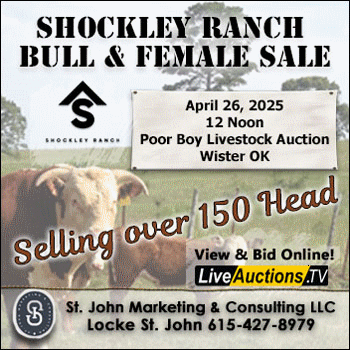Derrell S. Peel, Oklahoma State University
The cattle and beef industry consists of primary production at the cow-calf level followed by a series of margin sectors for stocker and feedlot production; slaughter and fabrication at the packing level; and a multitude of beef product markets including retail grocery, food service and exports. Price adjustments in each of the industry sectors are related but variable in magnitude and timing. It is generally true in food markets that prices at retail adjust less and more slowly than farm level. Increasingly tight cattle supplies suggest that margins at all levels above the cow-calf sector will be squeezed in the coming months. The severity of the squeeze and the timing will vary across beef industry segments.
Retail beef prices are mostly unchanged over the last 16 months, with the most recent monthly retail all fresh beef price down 0.7 percent year over year. However, current Choice boxed beef prices are up over 14 percent from one year ago. It appears that retail margins are decreasing as wholesale values are increasing faster than retail prices. The reported retail beef prices reflect only grocery sales and less is known about beef price adjustments in food service and export markets. The ability of retail beef prices to move higher as limited supplies and rising wholesale prices squeeze retail margins is perhaps the biggest concern in beef markets currently.
Packer margins are already being squeezed with more pressure expected ahead. Fed cattle prices are up 25 percent year over year, outpacing the 14 percent increase in boxed beef prices. Additionally, packers will face increased overhead costs as declining cattle numbers will reduce packing plant utilization rates in the coming months.
Feedlots are currently enjoying good profits due to the long time lags in feedlot production and the fact that fed prices increased quickly to record levels this year. The increase in fed cattle prices are balanced against the price of feeder cattle placed in feedlots roughly six months ago. However, it’s just a matter of time before feedlot margins feel the squeeze of rising cattle prices. The prices of feeder cattle currently being placed in feedlots are up about 39 percent year over year. Feedlot breakevens for fed cattle will increase sharply by the end of the year.
Calf prices are currently up roughly 50 percent year over year. With calf prices increasing faster than feeder cattle prices, stocker margins or value of gain is eroding. However, similar to feedlots, the time lags in stocker production will allow the uptrend in prices feeder sales to offset part of the high calf purchase prices. A significant uptrend in feeder prices is priced into Feeder futures contract for the deferred months and, depending on the details, stocker or backgrounding programs may still show decent prospects for positive returns. Calf prices are likely to continue increasing faster than feeder cattle prices in the coming months.
Cattle markets are increasingly focused on calf prices in order to build the incentives for herd expansion in the coming months. Cow-calf producers will see sharply rising revenues as calf prices continue to increase. Cow-calf production is the primary source of supply for the industry and, thus, cow-calf producers do not face buy-sell margins like the rest of the industry. However, input costs for fertilizer, chemicals and fuel have been a significant challenge for the cow-calf sector. Drought impacts and record high hay prices are a particular challenge for some producers. High calf prices that encourage herd rebuilding will be accompanied by sharply higher breeding cow and replacement heifer prices in the coming months. Undoubtedly there will be considerable dynamics and volatility in cattle and beef markets at all levels for the foreseeable future.















